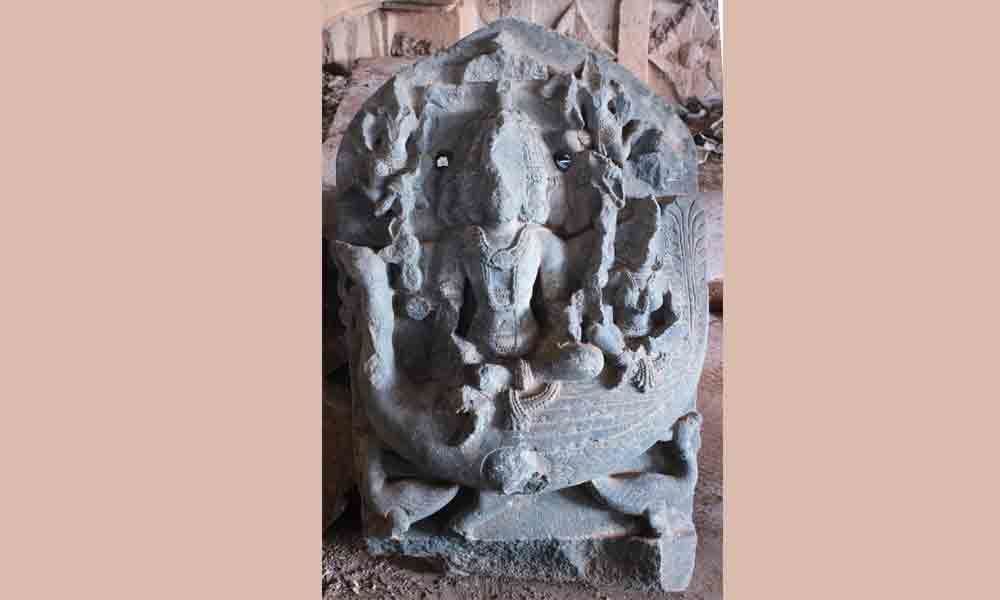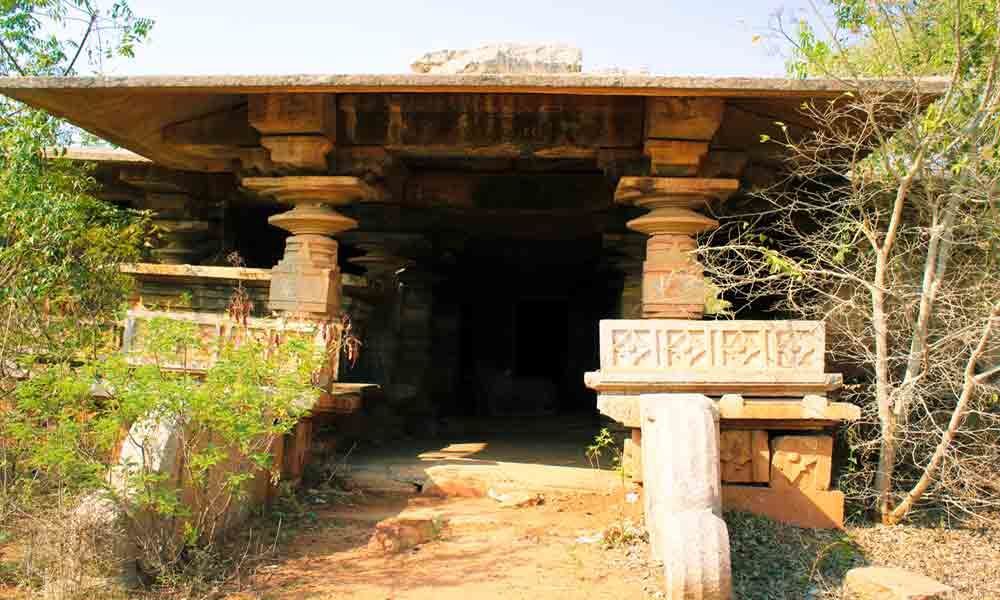Just In
Dr Hindola Gudiboina, a dentist by profession and an archeology and history enthusiast, and an amateur photographer by passion during one of her sojourns founded one of the oldest Viswakarma sculpture. She says, "The first ever monument that I've fallen in love with is the Golconda Fort & the Qutub Shahi Tombs at the age of 10 since I spent my childhood at the historic city of Hyderabad. It was love at first sight. There was something so very magnetic about the old world charm. Ever since then I didn't stop & I didn't want to stop." She pursued dentistry according to her parents' wishes, but she has never stopped exploring archeology and history, more so in the past two years, "Since 2 years I have been using my weekends and holiday to unravel the true identity of the social history and culture of the world in general & India in particular. Since, I hail from the historic city of Warangal, I thought it'd be great to make a mark of my beginnings here itself. My sole aim is to bring to light the 'real history of the people' & the 'real past' for a better understanding of the present...!"
One of the oldest ever viswakarma sculptures was recently discovered at a temple in Mupparam village. Mupparam is a village in the Dharmasagar mandal of Warangal Urban district around 15km away from Warangal city.And it was Dr Hindola Gudiboina who made the discovery of the rare sculpture of Lord Viswakarma with Goddess Gayatri. According to Hindu mythology, Lord Viswakarma is the creative archetypal power and the primordial creator. He is at once the supreme patron of arts, science, crafts & creativity, and also the great architect of the universe, spirit of the creative process and a symbol of total centered consciousness. He is said to have revealed the 'Sthapathya Veda', the 4th Upa-Veda and presides over the 64 mechanical arts.
After much study of the sculpture, she writes…
The Mupparam Temple
The temple at Mupparam is a typical Kakatiyan temple in red sandstone. It's a 10-pillared 'Trikutalayam', with a large central pillared 'Ranga mandapam' & 3 triple shrines. Here in this temple, surprisingly, all the three shrines are dedicated to Lord Shiva. Each of the shrine is further divided into a small ante chamber/ 'Antaralayam' and the 'Garbhagriha' / Sanctum Sanctorum. The door jambs of the all the three antaralayams are flanked on either sides by 'Purnakumbhas' symbolising auspiciousness and prosperity, while the door jambs of all the three Garbhagrihas are flanked on either sides by 'Saiva dvaarapaalakas'. Sadly, the Garbhagrihas of all the three shrines are destroyed and ransacked by treasure hunters.
As per an undated inscription on a hillock in the north of the village, "This temple was built by a certain 'Malli Reddi', the son of 'Pemta Bollireddi' and 'Kommasaani', during the reign of the Kakatiya king Ganapati Deva between 1199 - 1262 AD in the 13th century. The presiding deity or the 'moolavirat' of this temple is 'Ramesvaradeva'.
Lord Viswakarma and Goddess Gayatri - A rare sculpture of Lord
Viswakarma has recently been discovered at this temple. After thorough analysis, research and study of the iconography of the sculpture, it has been identified to be that of 'Lord Viswakarma'. Two renowned sthapathis Nemmikanti Narsaiah Chary, Gopala Krishna and the renowned sculptor Yeluri Sesha Brahmam have further confirmed that this is indeed a very rare sculpture of Lord Viswakarma. As the temple has been built during the reign of the Kakatiya king Ganapati Deva, the date of the sculpture also goes back to 13th century AD, making it more than 800 years old.
Iconography
The bow in one of the hands of the deity is the only weapon left intact in the sculpture. All the others have been destroyed…
Here we see Lord Viswakarma bedecked with jewels along with his divine consort 'Goddess Gayatri' seated on their 'Hamsa' vaahana. Hamsa in reality is the 'Indian goose' but not the Swan, which is a common misconception. He's flanked on either sides by flying Gandharvas in the upper half of the sculpture. He has 5 heads and 10 hands holding different 'Ayudhas' (weapons) like the shankham, chakram, dhanussu, banam, Veena, sarpam, Dhamaru etc... suggesting his versatility. Sadly, all the hands of the idol have been mutilated by plunderers excepting one hand which carries the 'Dhanussu' / the bow. Apparently, there is a 'Chhatram' or a parasol above the main figure of the deity lord, which is a characteristic feature in the iconography of Lord Vishwakarma.
Just like Lord Brahma, Lord Viswakarma also does not have many temples exclusively dedicated to him. But we do find idols or images of him placed in the temples of other Gods, just like the one we have recently found in a temple dedicated to Lord Shiva. No images of this God are now made since all the Viswakarma / Viswabrahmin artisans have ritualised their tools as symbols of their deity.

© 2024 Hyderabad Media House Limited/The Hans India. All rights reserved. Powered by hocalwire.com










